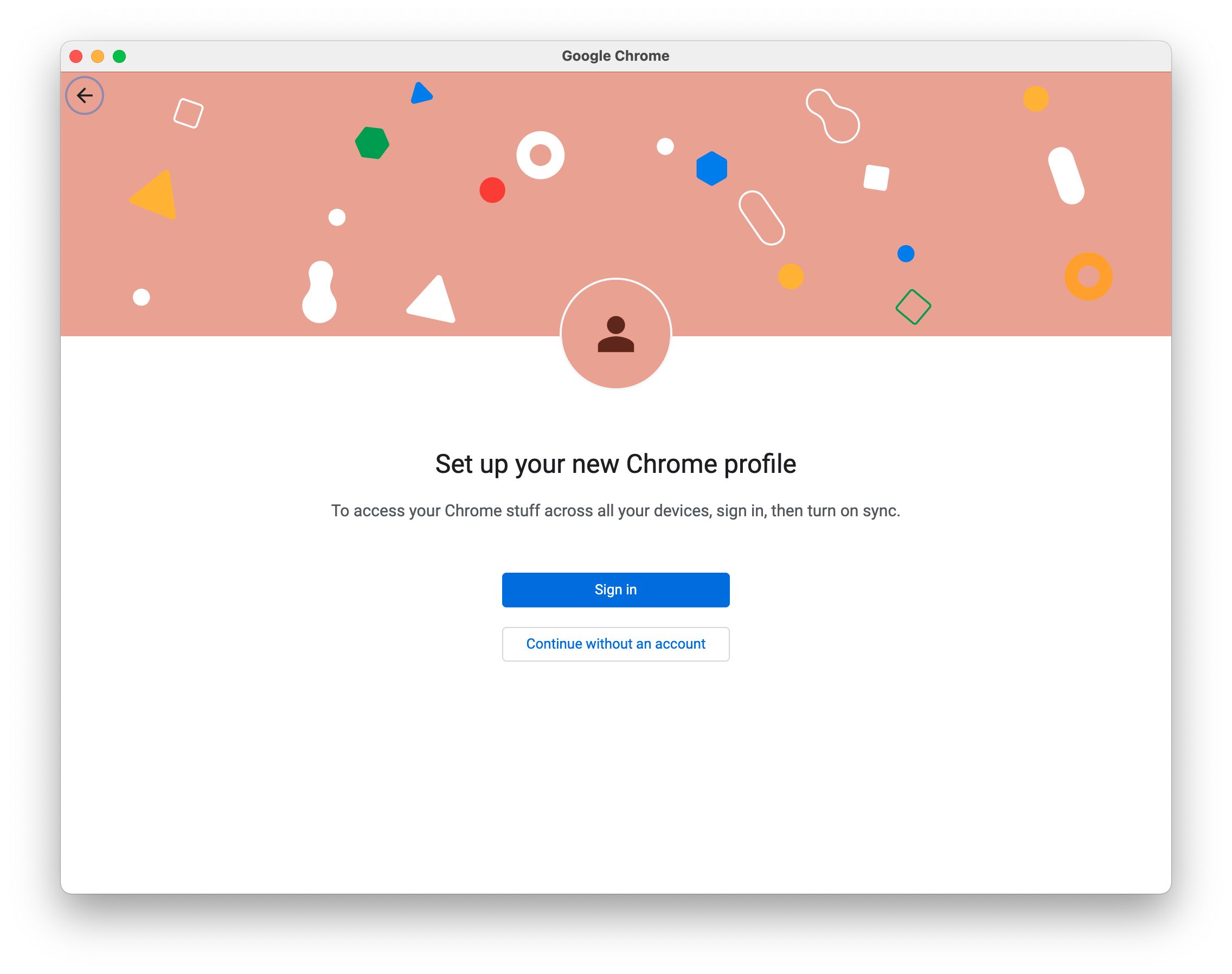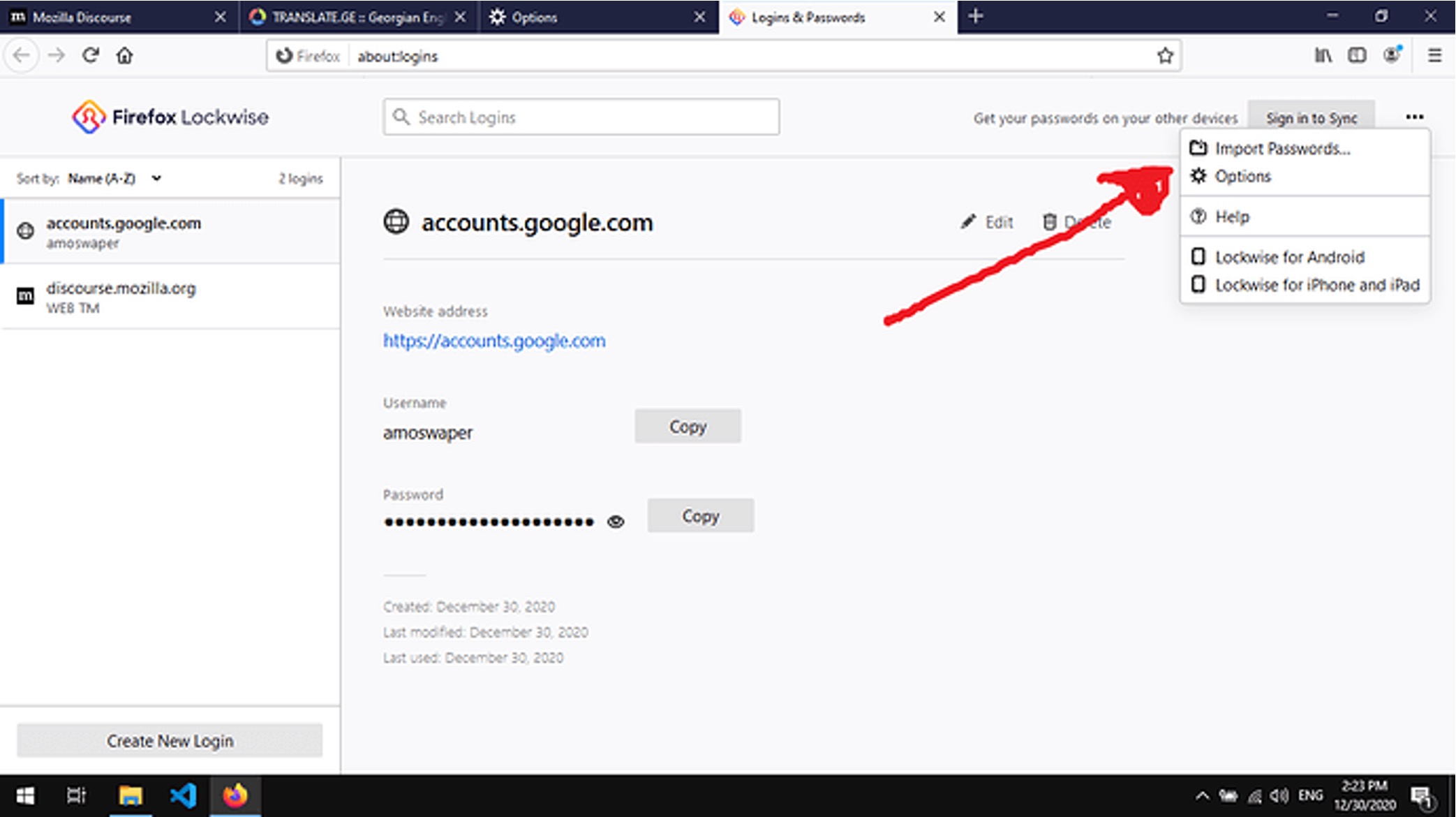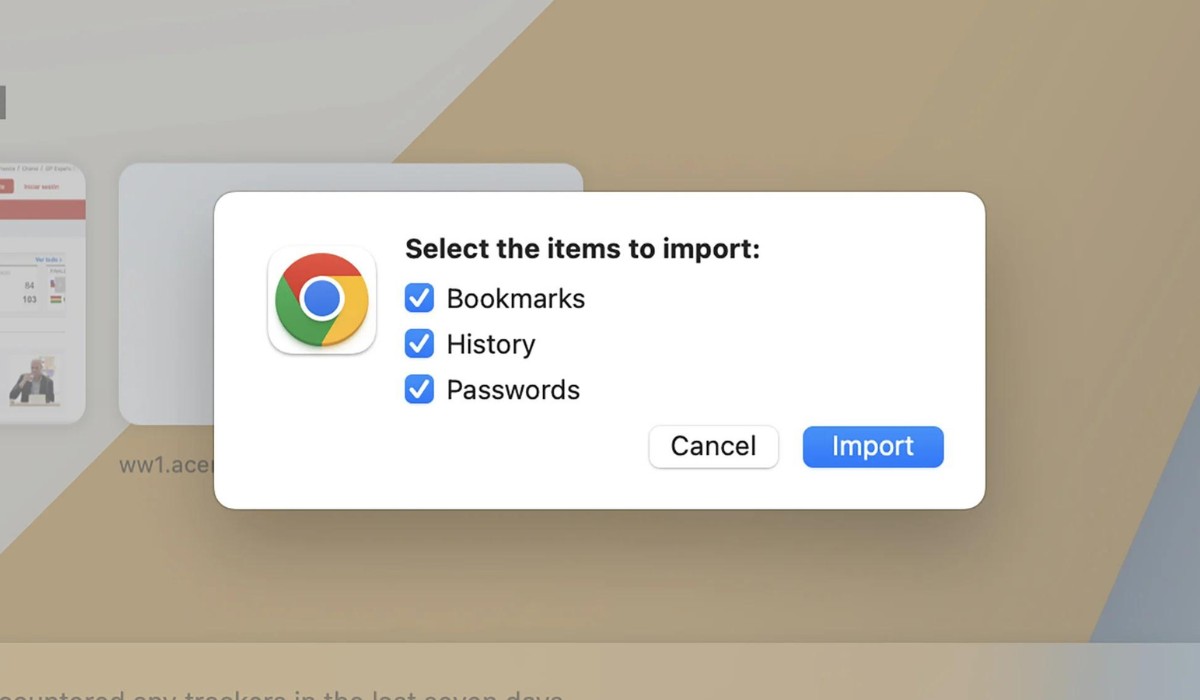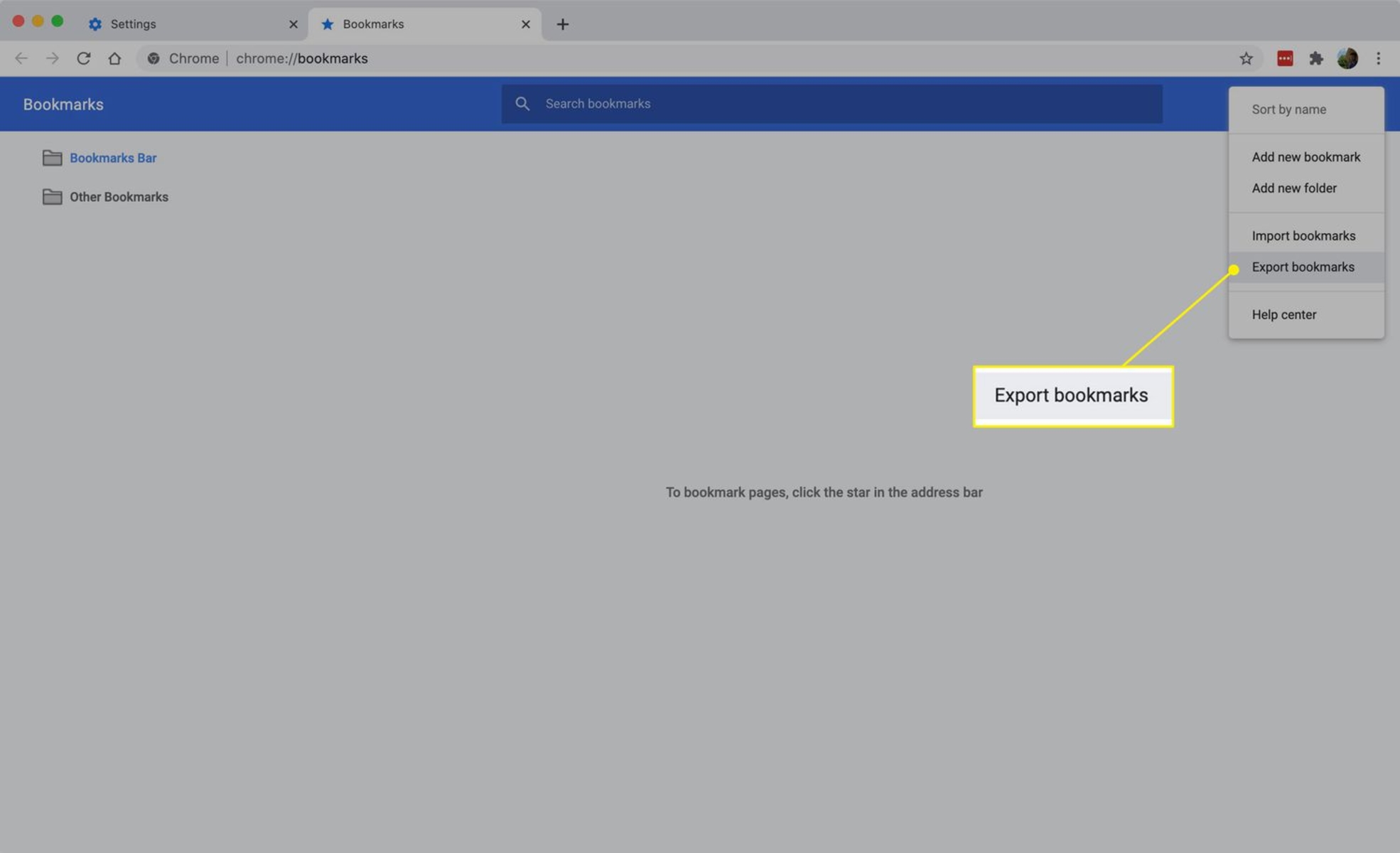Introduction
Chrome profiles are a powerful feature that allows users to create separate, personalized browsing experiences within the Chrome browser. Each profile can have its own set of bookmarks, browsing history, extensions, and saved passwords, providing a tailored environment for different users or specific tasks. However, there are times when you may need to export a Chrome profile, whether it's for backup purposes, transferring to a new device, or sharing with others. In this guide, we will explore the process of exporting and importing Chrome profiles, empowering you to manage your browsing experience with flexibility and ease.
Whether you're a seasoned Chrome user or just getting started, understanding how to export and import profiles can be invaluable. By mastering these techniques, you can ensure that your personalized browsing environment remains accessible and consistent across various devices. Additionally, the ability to share profiles with others can streamline collaboration and facilitate the seamless transfer of essential browsing data.
In the following sections, we will delve into the step-by-step process of accessing, exporting, and importing Chrome profiles. By the end of this guide, you will have a comprehensive understanding of how to manage Chrome profiles effectively, empowering you to harness the full potential of this versatile feature. Let's embark on this journey to unlock the power of Chrome profiles and take control of your browsing experience.
Step 1: Accessing Chrome Profiles
Accessing Chrome profiles is the first step towards managing and customizing your browsing experience. Each profile represents a distinct environment within the Chrome browser, allowing users to maintain separate sets of bookmarks, extensions, and browsing history. Whether you want to switch between personal and work-related profiles or create specialized environments for different tasks, understanding how to access Chrome profiles is essential.
To access Chrome profiles, follow these simple steps:
-
Open Chrome Browser: Launch the Chrome browser on your computer or device. Ensure that you are using the latest version of Chrome to access the full range of profile management features.
-
Click on Profile Icon: In the top-right corner of the browser window, you will see a profile icon. It may display your initials or a custom profile picture if you have set one. Click on this icon to reveal a dropdown menu.
-
Select "Manage Profile": From the dropdown menu, select "Manage Profile." This action will open a new window where you can view and manage existing profiles or create new ones.
-
Explore Profile Settings: Within the "Manage Profile" window, you can explore various settings and options related to Chrome profiles. This includes the ability to add new profiles, switch between existing profiles, and customize profile details such as names and profile pictures.
-
Access Profile Switcher: Additionally, you can access the profile switcher directly from the "Manage Profile" window. The profile switcher allows you to seamlessly switch between different profiles, enabling you to transition between distinct browsing environments with ease.
By following these steps, you can effortlessly access and manage Chrome profiles, empowering you to tailor your browsing experience to your specific needs. Whether you're a solo user looking to separate personal and professional browsing activities or a team member collaborating within shared profiles, mastering the art of accessing Chrome profiles is the first step towards harnessing the full potential of this versatile feature.
Understanding how to access Chrome profiles sets the stage for further exploration, including the process of exporting and importing profiles, which we will delve into in the following sections. With the ability to access and manage profiles at your fingertips, you are well-equipped to navigate the dynamic landscape of personalized browsing experiences within the Chrome browser.
Step 2: Exporting Chrome Profiles
Exporting Chrome profiles is a valuable process that allows users to safeguard their personalized browsing data, transfer profiles to new devices, or share them with others. By exporting a Chrome profile, you can preserve essential elements such as bookmarks, browsing history, saved passwords, and installed extensions, ensuring that your customized browsing environment remains intact across different platforms. Whether you're transitioning to a new computer, collaborating with team members, or simply seeking to backup your browsing data, mastering the art of exporting Chrome profiles is a crucial skill.
To export a Chrome profile, follow these straightforward steps:
-
Access Profile Management: Begin by opening the Chrome browser and accessing the profile management interface. Click on the profile icon in the top-right corner of the browser window and select "Manage Profile" from the dropdown menu. This action will open the profile management window, where you can view and manage existing profiles.
-
Select Profile for Export: Within the profile management window, identify the specific profile that you wish to export. If you have multiple profiles set up, ensure that you select the correct one before proceeding with the export process. Click on the profile to highlight it and access the profile details.
-
Navigate to Chrome Settings: Once you have selected the desired profile, navigate to the Chrome settings menu by clicking on the three-dot icon in the top-right corner of the browser window. From the dropdown menu, select "Settings" to access the browser's configuration options.
-
Open Advanced Settings: Within the Chrome settings menu, scroll down and click on "Advanced" to reveal additional configuration options. This will expand the settings menu, providing access to advanced features and customization tools.
-
Export Profile Data: Under the advanced settings menu, locate the "Sync and Google services" section. Within this section, you will find the option to "Manage Sync." Click on this option to access the sync settings, which include the ability to export browsing data associated with the selected profile.
-
Initiate Export Process: Within the sync settings, look for the "Data from Chrome sync" section. Here, you will find the option to "Download Chrome data." Click on this option to initiate the export process for the selected profile. Chrome will generate a downloadable file containing the browsing data associated with the profile.
-
Save Exported File: Once the export process is complete, Chrome will prompt you to save the exported file to a location of your choice on your computer. Choose a suitable location and save the file, ensuring that you retain access to the exported profile data for future use.
By following these steps, you can successfully export a Chrome profile, preserving its essential elements and customizations in a downloadable file. This process empowers you to maintain control over your browsing environment, facilitating seamless transitions between devices and the ability to share profiles with others. Whether you're a solo user managing personal and professional profiles or a team member collaborating within shared environments, the ability to export Chrome profiles is a valuable skill that enhances the flexibility and accessibility of your browsing experience.
Step 3: Importing Chrome Profiles
Importing Chrome profiles is a pivotal process that enables users to seamlessly transfer personalized browsing data from exported files into the Chrome browser. Whether you're setting up a new device, restoring a backup, or integrating shared profiles, the ability to import Chrome profiles is essential for maintaining a consistent and tailored browsing experience across different platforms. By mastering the art of importing profiles, you can effortlessly reintegrate essential elements such as bookmarks, browsing history, saved passwords, and installed extensions, ensuring that your customized browsing environment remains intact and accessible.
To import a Chrome profile, follow these straightforward steps:
-
Access Chrome Settings: Begin by opening the Chrome browser on the target device where you intend to import the profile. Ensure that you are using the latest version of Chrome to access the full range of profile management features.
-
Navigate to Profile Management: Click on the profile icon in the top-right corner of the browser window and select "Manage Profile" from the dropdown menu. This action will open the profile management window, where you can view and manage existing profiles or create new ones.
-
Access Profile Import Settings: Within the profile management window, look for the option to import a profile. This feature may be located within the profile settings or the broader Chrome settings menu, depending on the specific version of the browser.
-
Locate Exported Profile File: When prompted to import a profile, navigate to the location where you have saved the exported profile file on your computer. Select the file and initiate the import process within the Chrome browser.
-
Confirm Import Settings: Depending on the specific import process, you may be prompted to confirm the import settings and customize certain aspects of the profile before finalizing the import. Follow the on-screen instructions to ensure that the imported profile aligns with your preferences and requirements.
-
Complete Import Process: Once the import process is initiated and the necessary settings are confirmed, Chrome will proceed to import the profile data from the selected file. This may include bookmarks, browsing history, saved passwords, and installed extensions, among other personalized elements.
By following these steps, you can successfully import a Chrome profile, reintegrating its essential elements and customizations into the browser environment. This process empowers you to maintain a consistent and tailored browsing experience, whether you're transitioning to a new device, restoring a backup, or collaborating within shared profiles. The ability to import Chrome profiles enhances the flexibility and accessibility of your browsing environment, ensuring that your personalized data remains accessible and seamlessly integrated across different platforms.
Conclusion
In conclusion, mastering the art of exporting and importing Chrome profiles empowers users to take full control of their browsing experience, ensuring that personalized data remains accessible and consistent across different devices and environments. The ability to export a Chrome profile provides a valuable safety net, allowing users to safeguard essential elements such as bookmarks, browsing history, saved passwords, and installed extensions. Whether it's for backup purposes, transitioning to a new device, or sharing profiles with others, the export process ensures that personalized browsing data remains secure and readily available.
Furthermore, the process of importing Chrome profiles seamlessly reintegrates exported data into the browser environment, facilitating a smooth transition between devices and the restoration of personalized settings. By understanding how to import profiles, users can maintain a consistent browsing experience, whether they are setting up a new device, restoring a backup, or collaborating within shared profiles. This level of flexibility and accessibility ensures that users can harness the full potential of Chrome profiles, tailoring their browsing environment to their specific needs and preferences.
The ability to access, export, and import Chrome profiles represents a powerful tool for individuals and teams alike. Solo users can separate personal and professional browsing activities, ensuring that each environment remains distinct and tailored to specific tasks. Team members can collaborate within shared profiles, streamlining workflows and facilitating the seamless transfer of essential browsing data. By mastering these techniques, users can navigate the dynamic landscape of personalized browsing experiences within the Chrome browser, unlocking the full potential of this versatile feature.
In essence, the process of managing Chrome profiles is not only about customization and personalization but also about flexibility, accessibility, and control. By understanding how to export and import profiles, users can ensure that their browsing environment remains consistent and tailored to their preferences, regardless of the devices they use or the tasks they undertake. This level of empowerment transforms the browsing experience into a seamless and personalized journey, where users can navigate the digital landscape with confidence and ease.

























